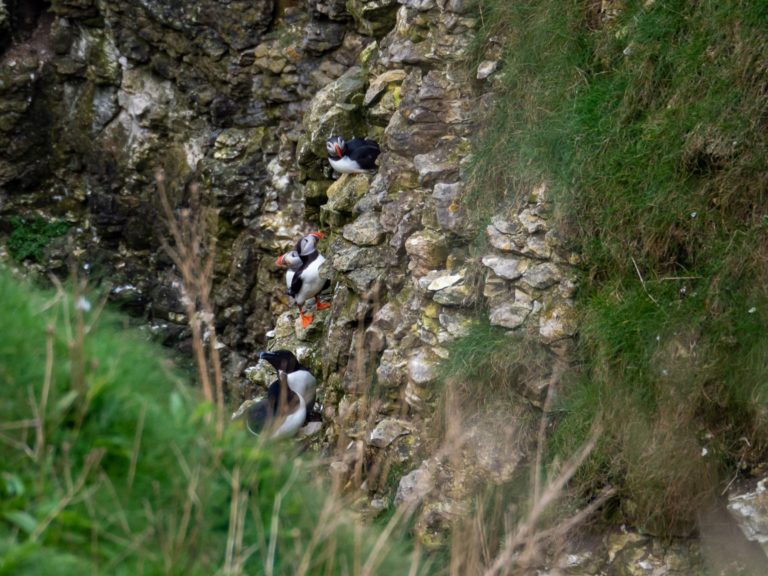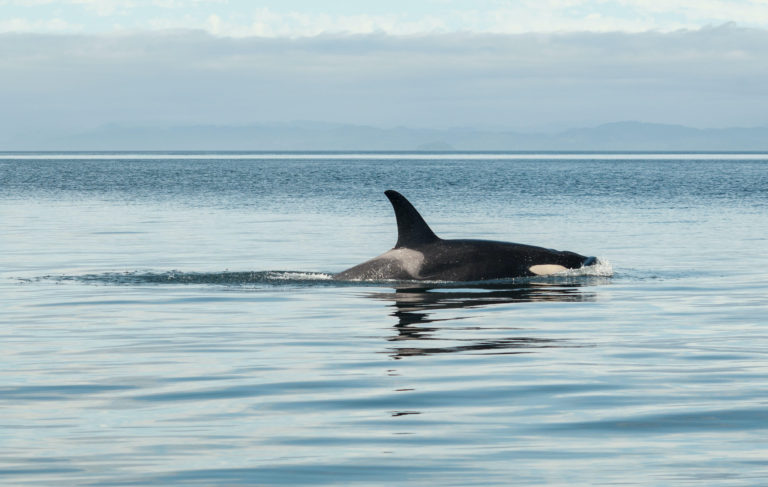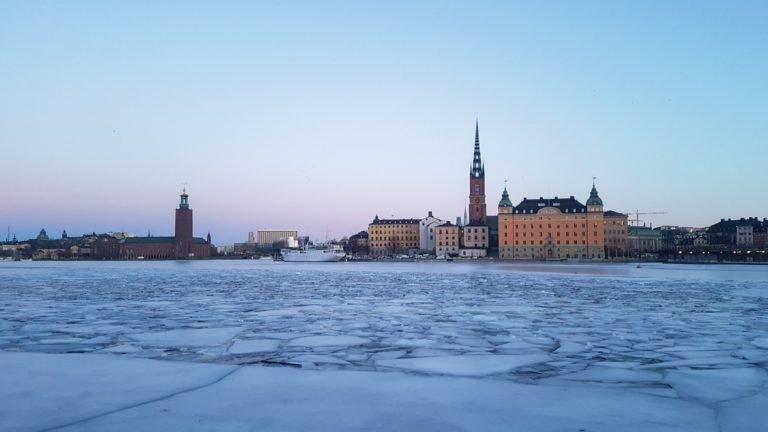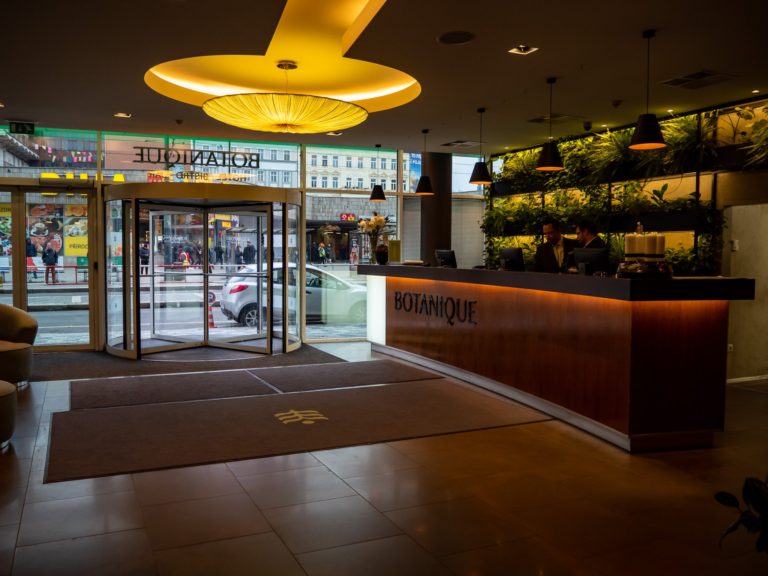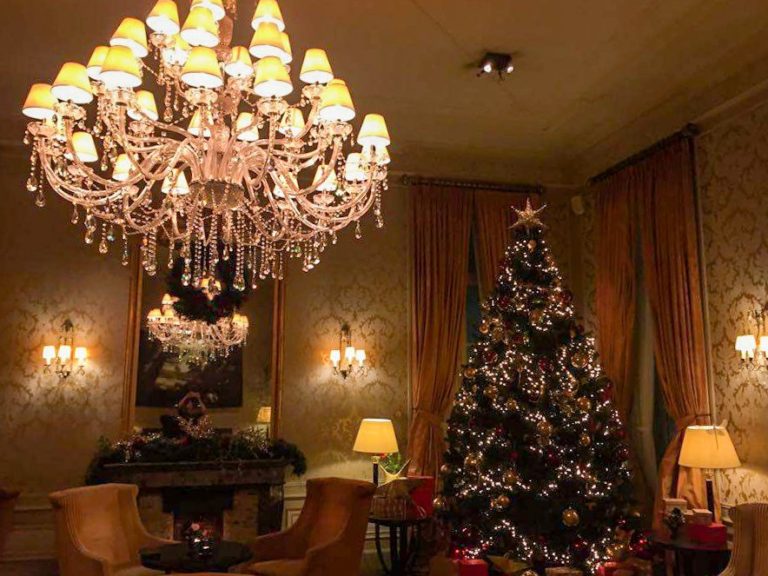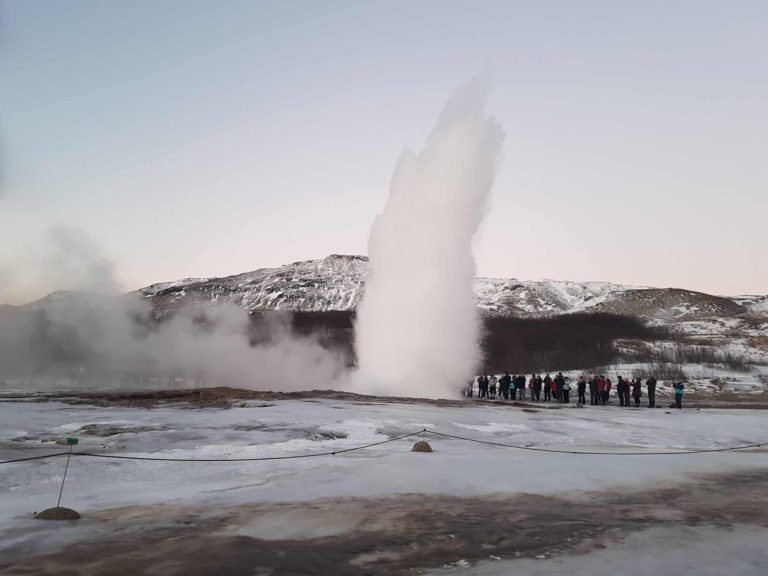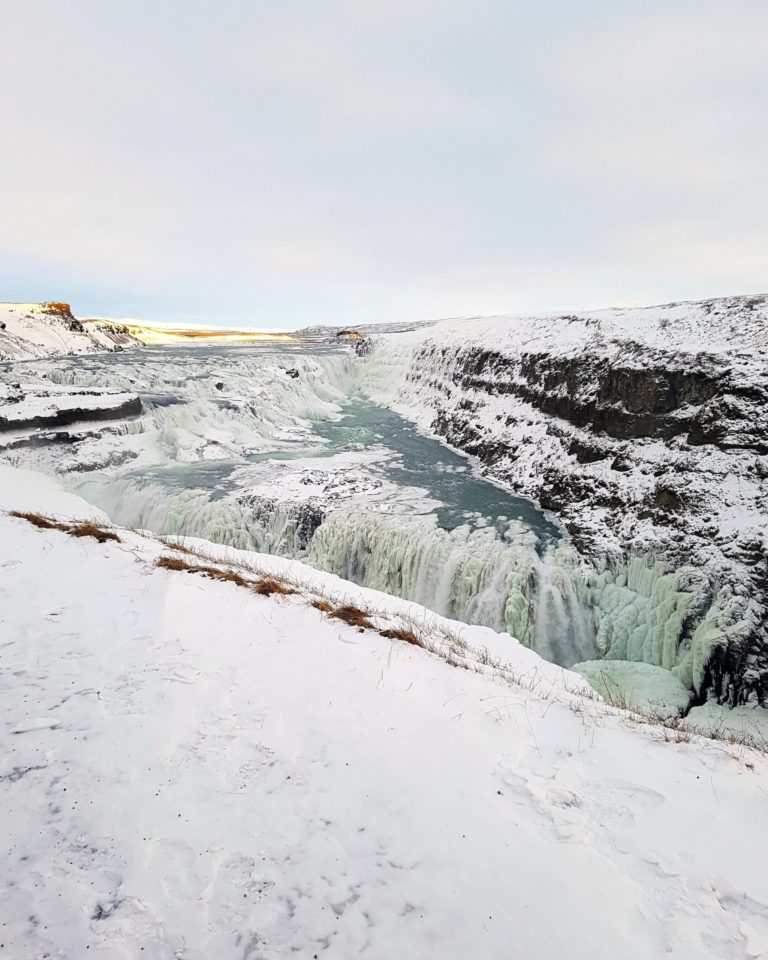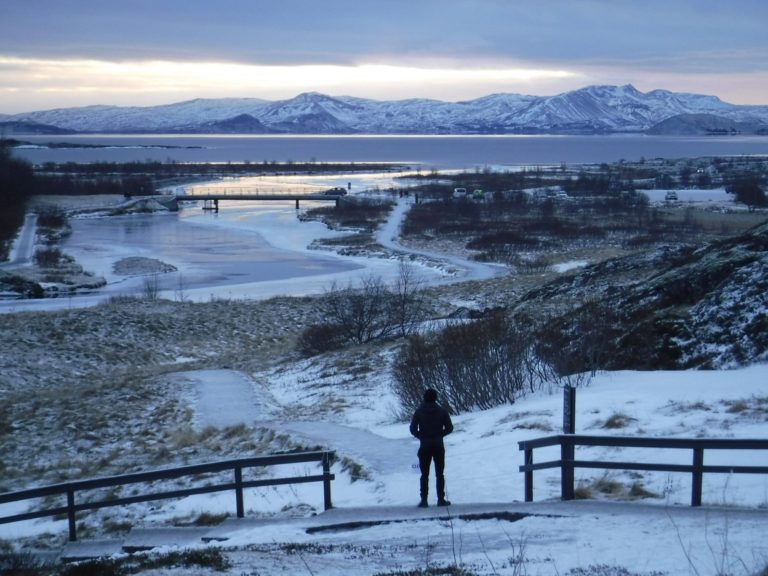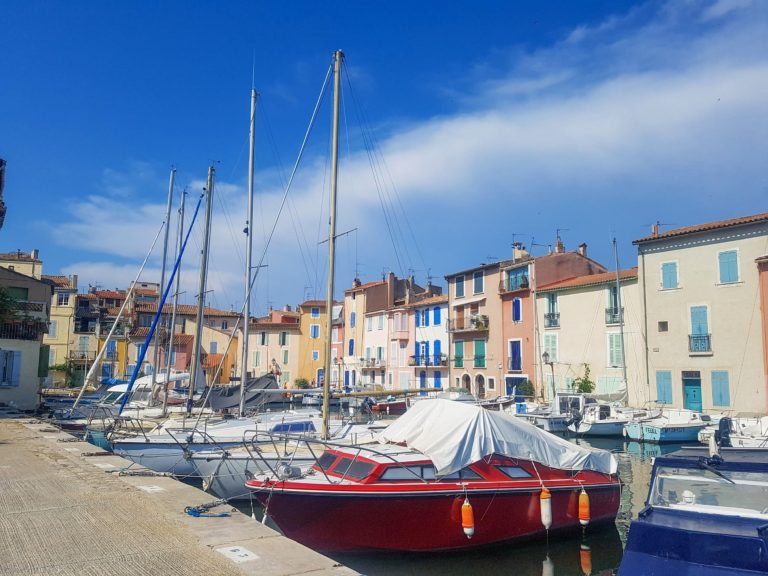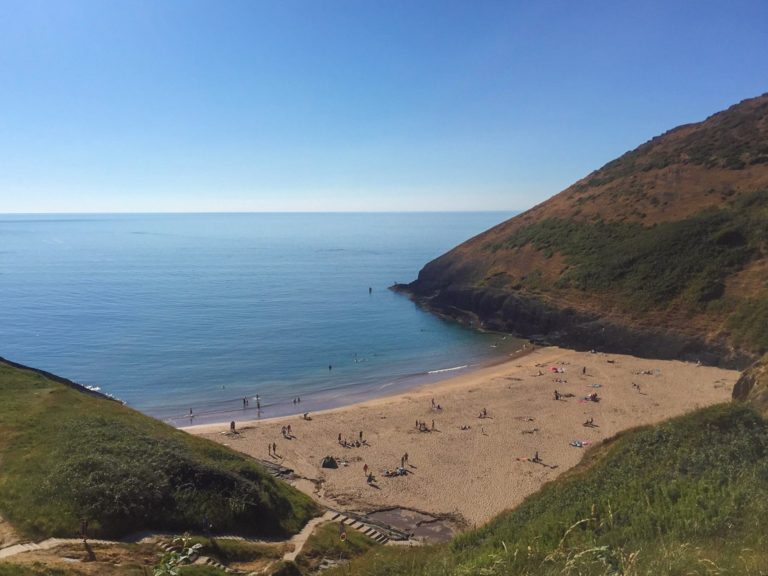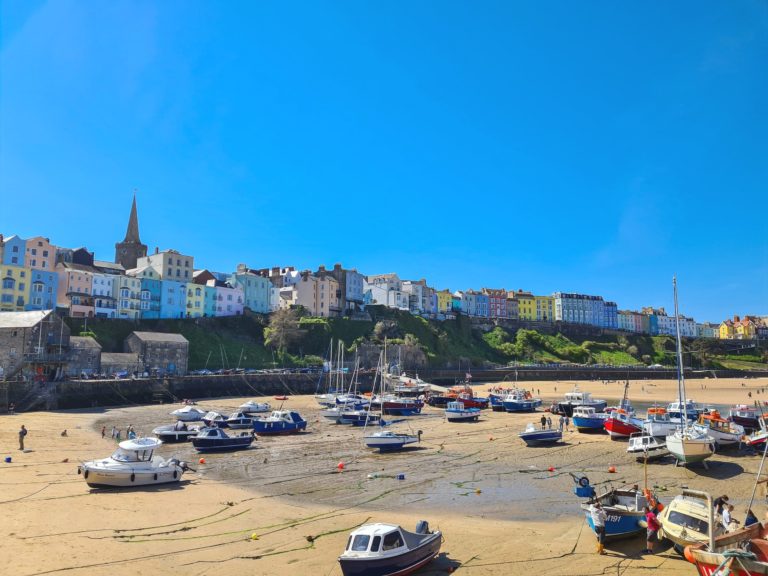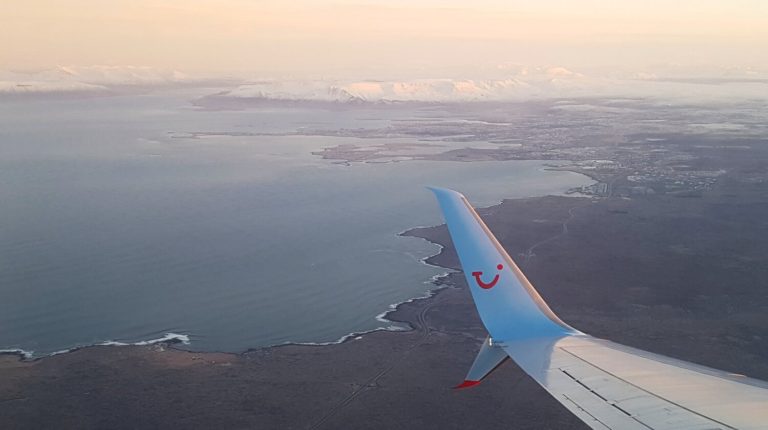The Thorough Guide to Reykjavík
The 40 best things to see in Reykjavík, how to get here, what to eat, where to stay, an interactive map and more!
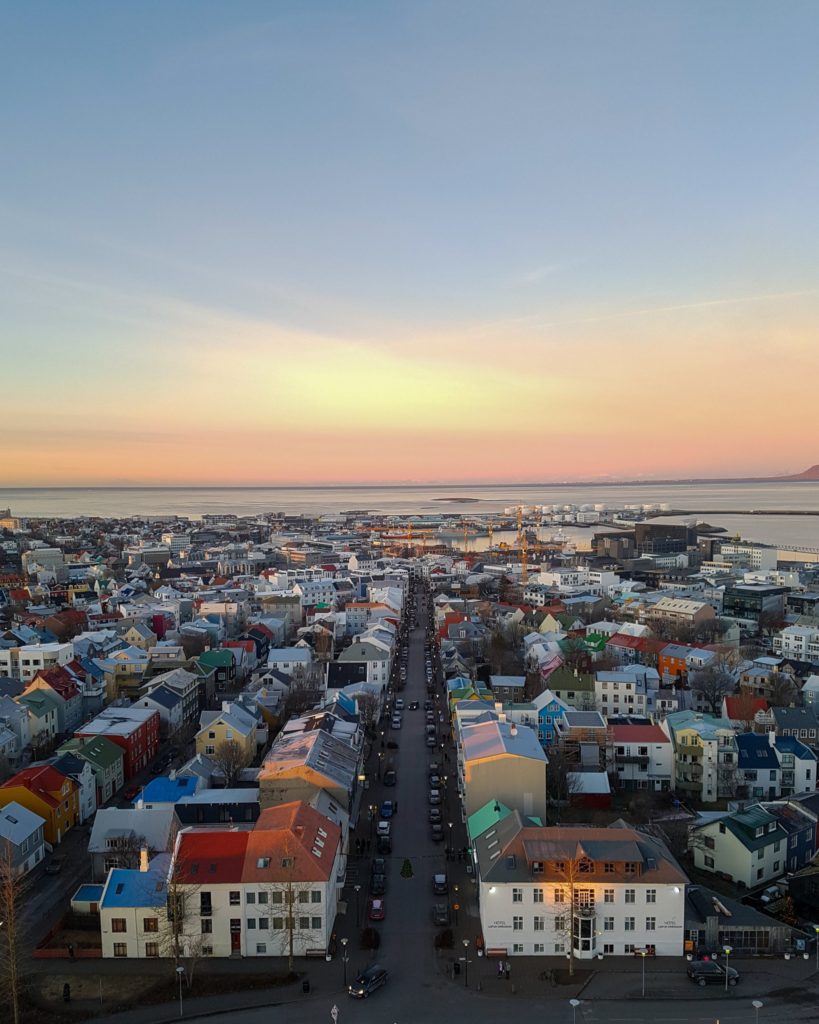
This post may contain affiliate links, which means we might earn a small commission on anything purchased through these links at no extra cost to you. Learn more on our disclaimer page.
Iceland, the Land of Ice and Fire, is known for rugged landscapes teeming with volcanoes spewing lava, icy glaciers, gushing waterfalls, lush valleys and cute Icelandic horses. And there’s no better place to base yourself than the capital, Reykjavík. Use this complete Reykjavik guide to plan your next Iceland getaway and make the most of what Reykjavik has to offer. Whether you have a few days to enjoy an intimate city break or a few weeks for an epic road trip, one thing’s for sure, you won’t be bored and you won’t leave disappointed.
Time needed: 4-5 days.
When to go: Late November-December for the Northern Lights, snow and Christmas decorations / June-July for warmer weather.
Weather: Averages of -5°C-5°C in the Winter and 8°C-15°C in the Summer.
Language: Icelandic.
Currency: Icelandic króna.

The best things to see in Reykjavík
1) Climb Hallgrímskirkja Church Tower
Located in the centre of town, this church is the largest in Iceland (and there are a lot of them!). Designed in 1937, Hallgrímskirkja wasn’t completely finished until 1986. The church is named after pastor and poet Hallgrímur Pétursson, author of the Passíusálmar (The Passion Hymns). The tower is 74.5 metres high and boasts a viewing platform with 360° views over the entire city. The church is free but there is a small fee to climb the tower.
Pro-tip: Visit an hour before dusk to see Reykjavík in daylight and lit up at night. You might also be treated to a stunning sunset.
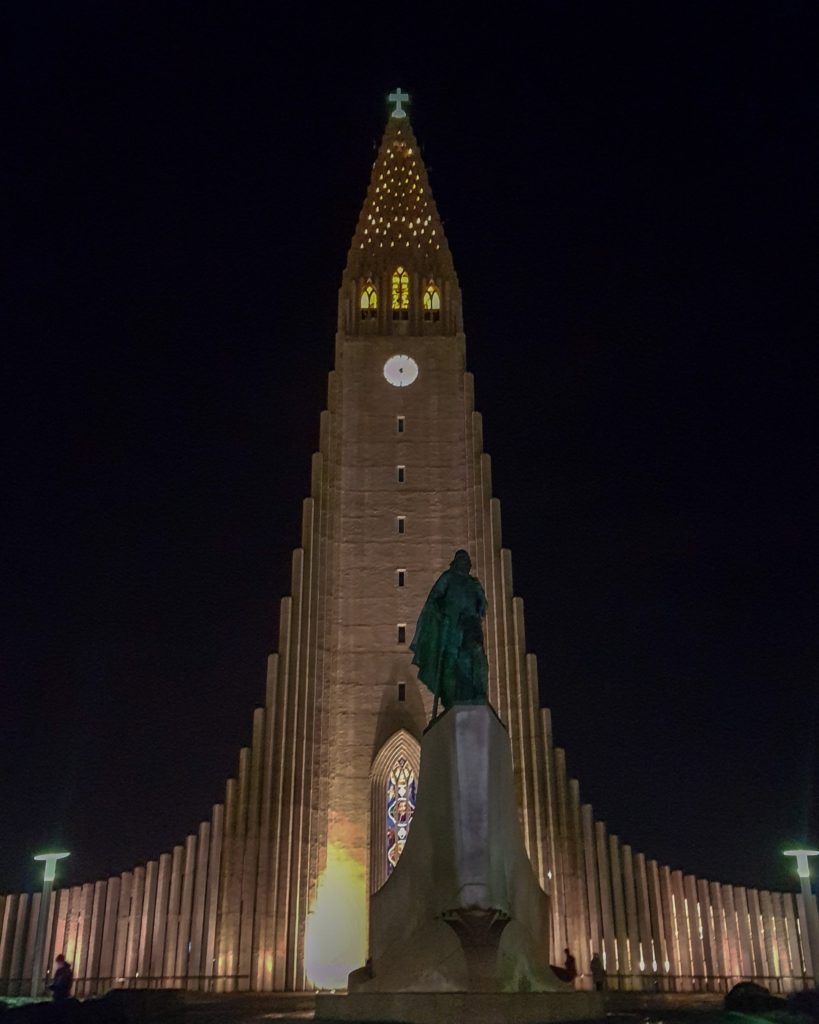
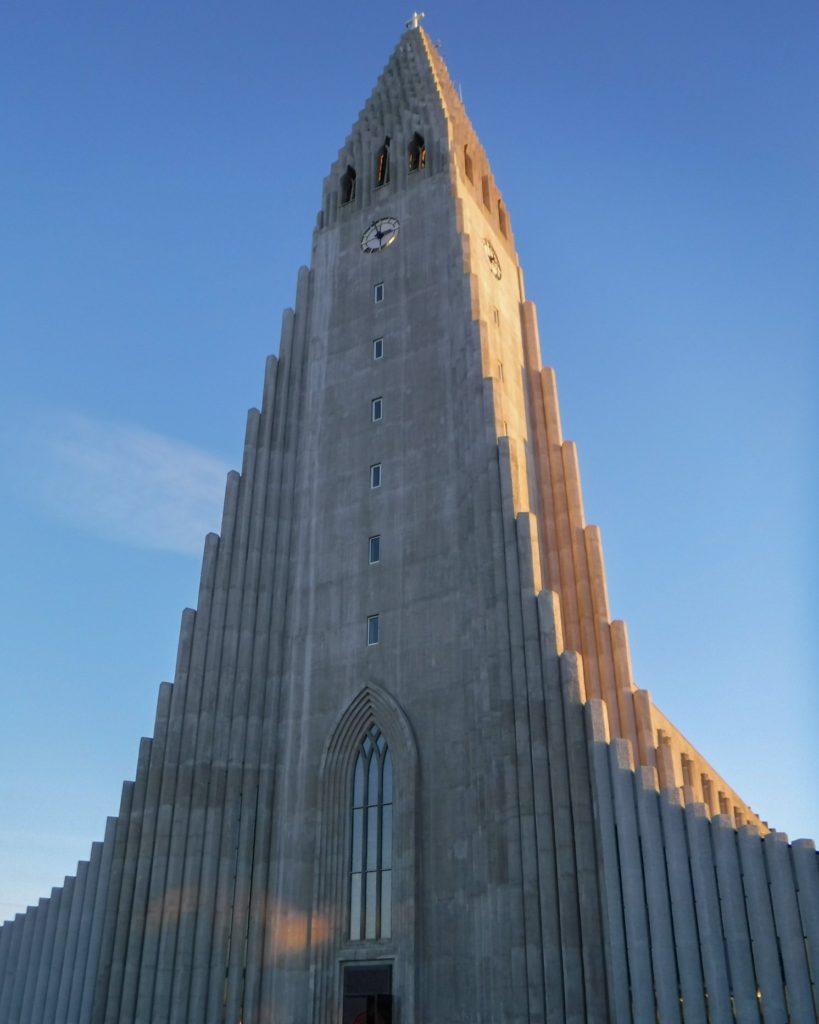
2) Marvel at Sólfar
The Sun Voyager (Sólfar), a sculpture by Jón Gunnar Árnason, represents a Viking Ship and conveys the promise of undiscovered territory, a dream of hope, progress and freedom. With a backdrop of snowy mountains, the sculpture makes for an impressive photo stop.

3) Walk on Lake Tjörnin
Lake Tjörnin, known colloquially as The Pond, is a small lake in the centre of Reykjavík. Situated next to the Reykjavík City Hall, the lake is a wonderful place to stroll along the banks and spot birdlife.
According to a myth, two elderly ladies lived on opposite sides of the lake. One day, while they were washing their clothes in the water, an argument ensued as to who should have rights to all of the fish in the lake. In the heat of the moment, both ladies entered the water and all of the fish turned to bugs and crustaceans.
Visit during Winter to walk over the completely frozen lake or bring a pair of skates and join the locals ice skating.
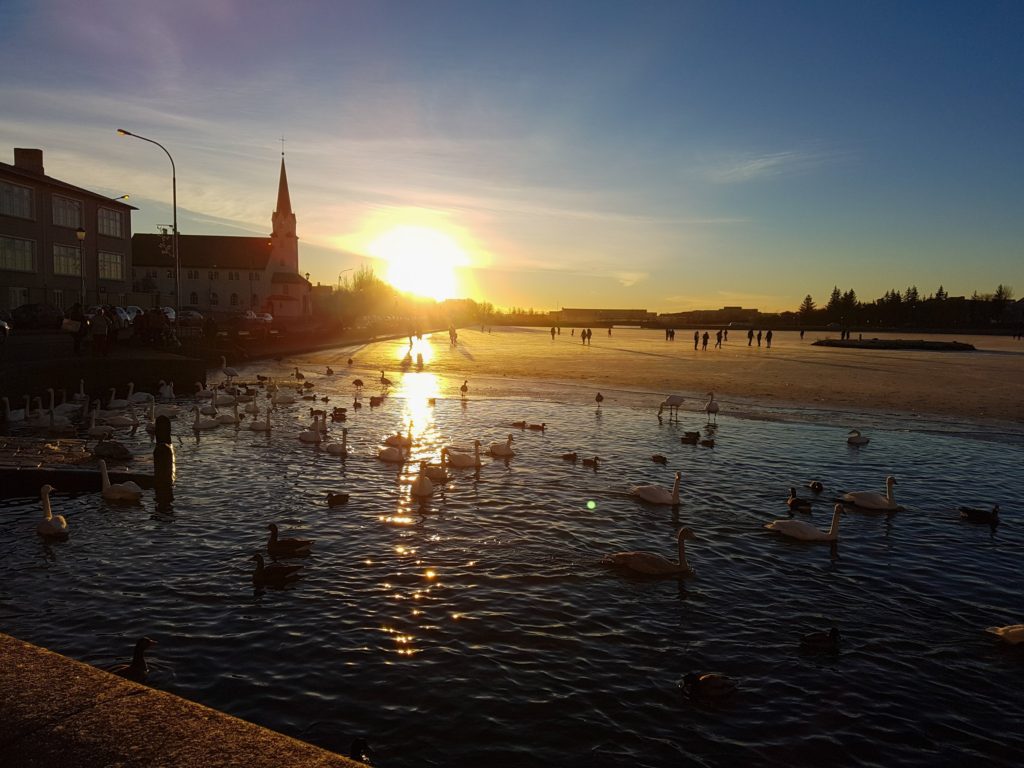
4) Watch a show at Harpa Concert Hall
Impressive inside and out Harpa is the home of the Iceland Symphony Orchestra, Icelandic Opera and the Reykjavík Big Band. Opened in May 2011, the building features a distinctive coloured glass façade inspired by the basalt (black volcanic rock) landscape of Iceland. Stop here to catch a show, visit the café or pick up a trinket in the gift shop.
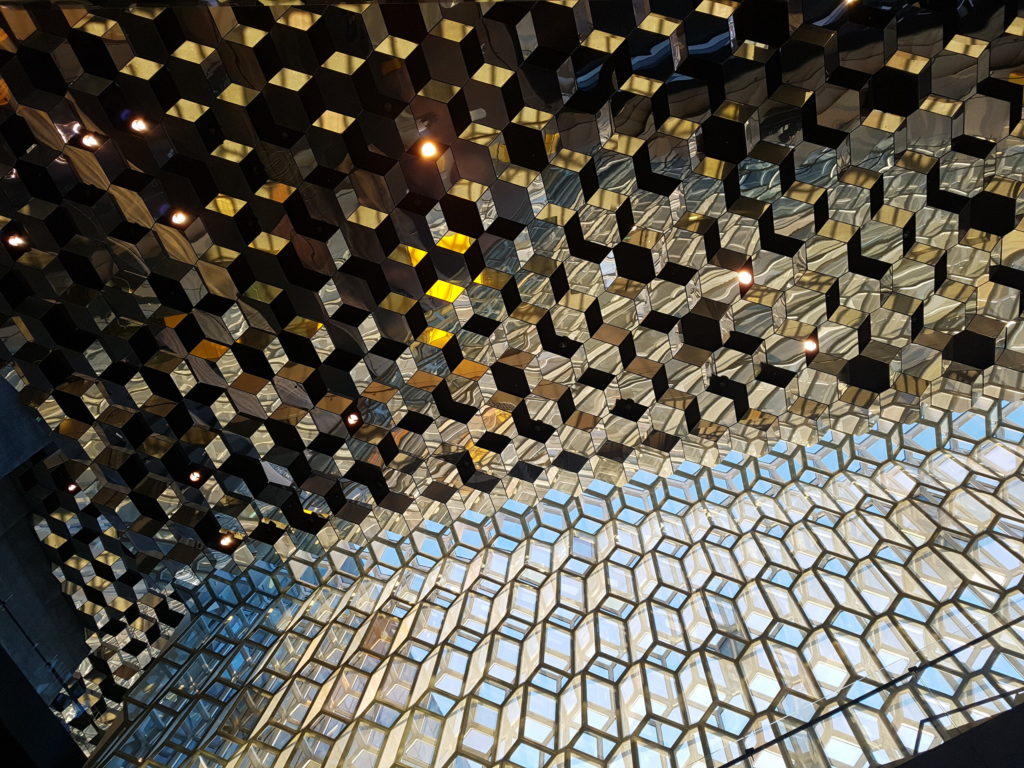
5) Take a Walking Tour
There’s no doubt that wandering around can be the best way to explore a new city. Reykjavík’s streets offer everything from impressive architecture to stunning, surrounding views of snow-capped mountains and cool street art. If you’re looking for a unique way to see Reykjavík’s main attractions, consider joining a Walking Tour of Reykjavík with a Viking. This tour is not only a fun way to orient yourself, but you’ll also learn a lot about Iceland’s history, myths and legends, as well as get all the best attraction and restaurant recommendations from your local guide.
Alternatively, you can join a Folklore Walking Tour where you’ll learn about Iceland’s mythical characters, including elves, trolls and ghosts. Or take a 3 hour, small-group Classic City Walking Tour with a local guide for a more traditional experience. If you’re on a budget, check out our interactive map of Reykjavík. We’ve pinned all the main sites in Reykjavík, as well as food and drink recommendations and everything else you need to make a DIY self-walking tour.
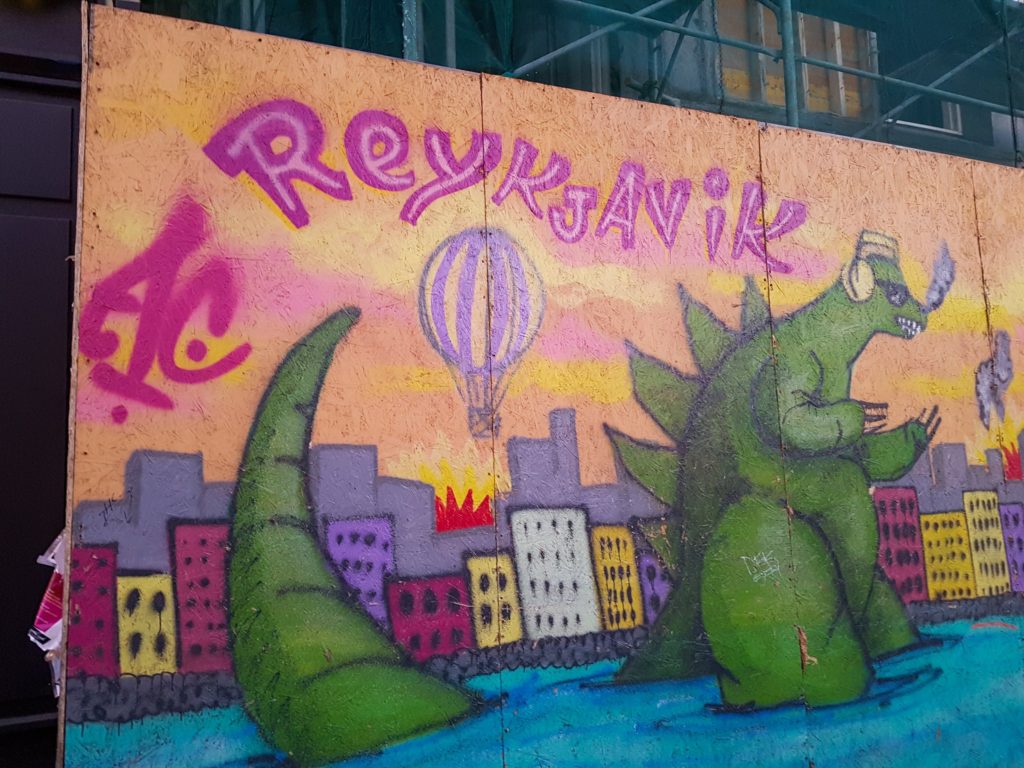
6) Go Whale Watching and Puffin Spotting
Whale watching is without a doubt one of the best things to do in Reykjavík. The best time for whale watching in Iceland is between April and October, with the peak being in the Summer months of June, July and August. Whale species such as Humpback, Blue, Fin, Minke, Sperm and Orcas can be spotted in the waters off Iceland’s capital and the best way to see them is on a boat tour from Reykjavík Harbour. There are several different types of whale watching trips from Reykjavík, with the majority of them including puffin spotting too.
Whale watching trips typically take 3 hours and provide overalls to keep you warm, as well as a knowledgeable guide who will give you lots of informative commentary. You’ll likely spot whales, dolphins, porpoises and puffins, as well as cruising past the main sights of Iceland’s capital from the water. Here are the best, eco-certified whale watching tours you can join from Reykjavík:
Small group: Wildlife Tour in a Speedy RIB
Affordable: Whale Watching Tour by Fast Catamaran
Romantic: Midnight Sun Whale Watching Cruise
Comfort: Big Boat Whale Watching Tour

7) Attend an event
Reykjavík has a reputation as one of the trendiest capital cities in Europe, and for good reason. There’s always something going on with numerous festivals, parties and events scheduled throughout the year. Here are a few of the best annual events in Reykjavík to time your visit with:
- January/February: Reykjavík International Games
- February: Reykjavík Winter Lights Festival
- February/March: Reykjavík Food and Fun Festival
- May: Reykjavik Arts Festival
- 17th June: Iceland National Day
- August: Reykjavík Pride
- September/October: Reykjavik International Film Festival (RIFF)
- October/November: Iceland Airwaves Music Festival
- 31st December: New Year’s Eve
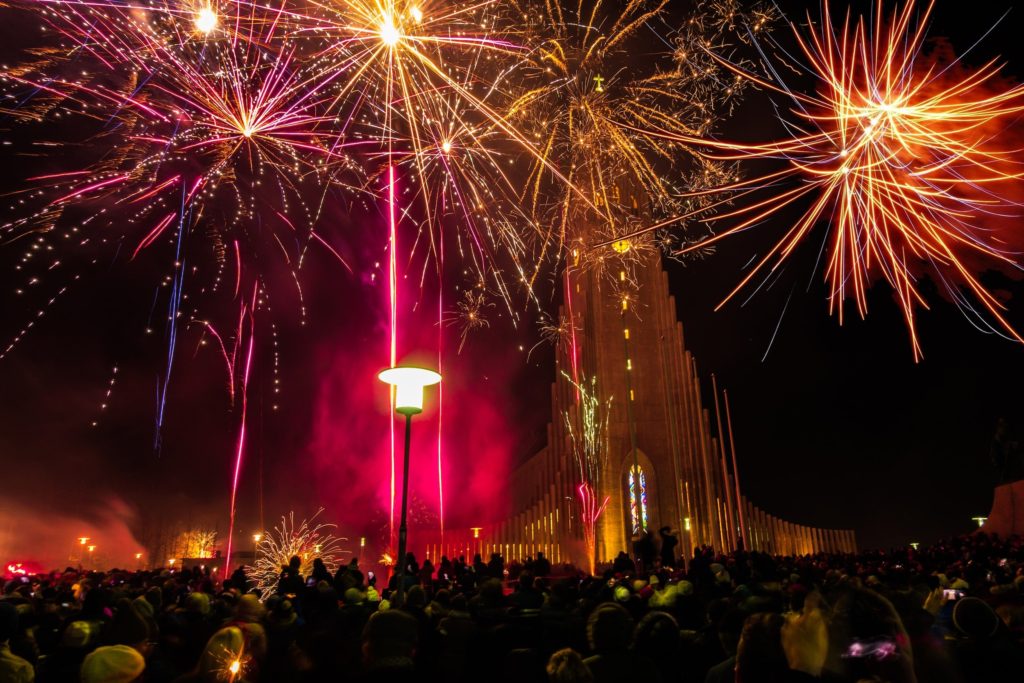
8) Souvenir Shop
Reykjavík’s quirky streets are the perfect place to pick up an Icelandic souvenir. Browse Laugavegur, the main shopping street, which houses numerous boutique gift shops and unique stores. Or head to Skólavörðustígur. Now known as Rainbow Street due to the long multi-coloured road that leads to Hallgrímskirkja, this picturesque street is lined with shops offering handmade arts and handicraft items. We particularly love Iceland Memories’ unique painted designs and cute sheep memorabilia. You can find them on Laugavegur.
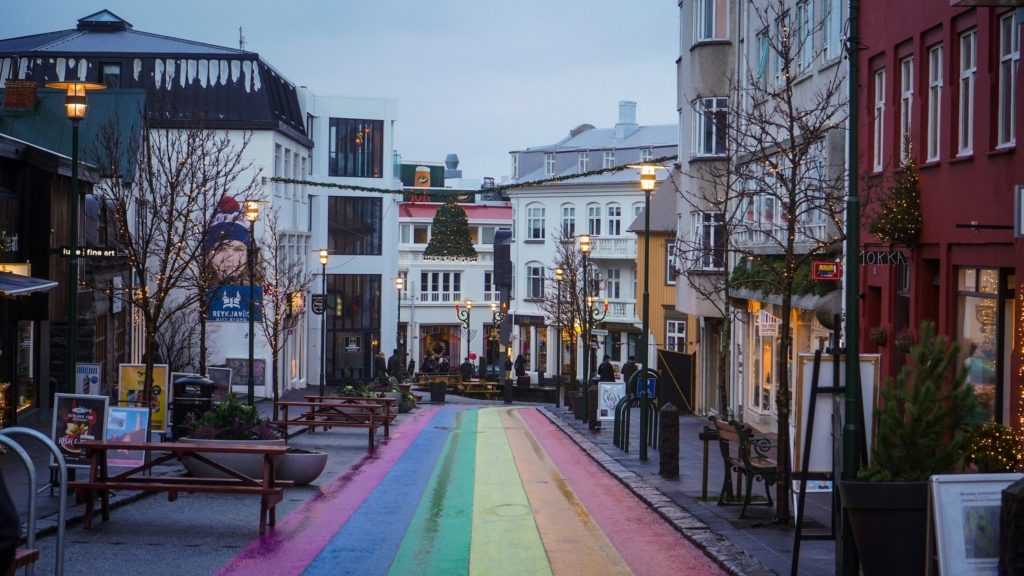
9) Aurora Reykjavík: The Northern Lights Centre
For many, seeing the Northern Lights is the best thing to do in Iceland. You can find out more about taking a Northern Lights Tour from Reykjavík a bit later in this article (click here to zip down there now) but one thing you should not miss is the Aurora Reykjavík. An information centre with historical interactive exhibitions, The Northern Lights Centre will teach you everything you need to know about chasing, finding, identifying and capturing one of the most unique natural phenomenons in the world. Watch magnificent 4K auroral displays captured all over Iceland and projected onto a 7-meter wide screen and get assistance with the right camera settings to capture the Aurora yourself.
Buy your Entry Ticket for Aurora Reykjavík: The Northern Lights Centre here!
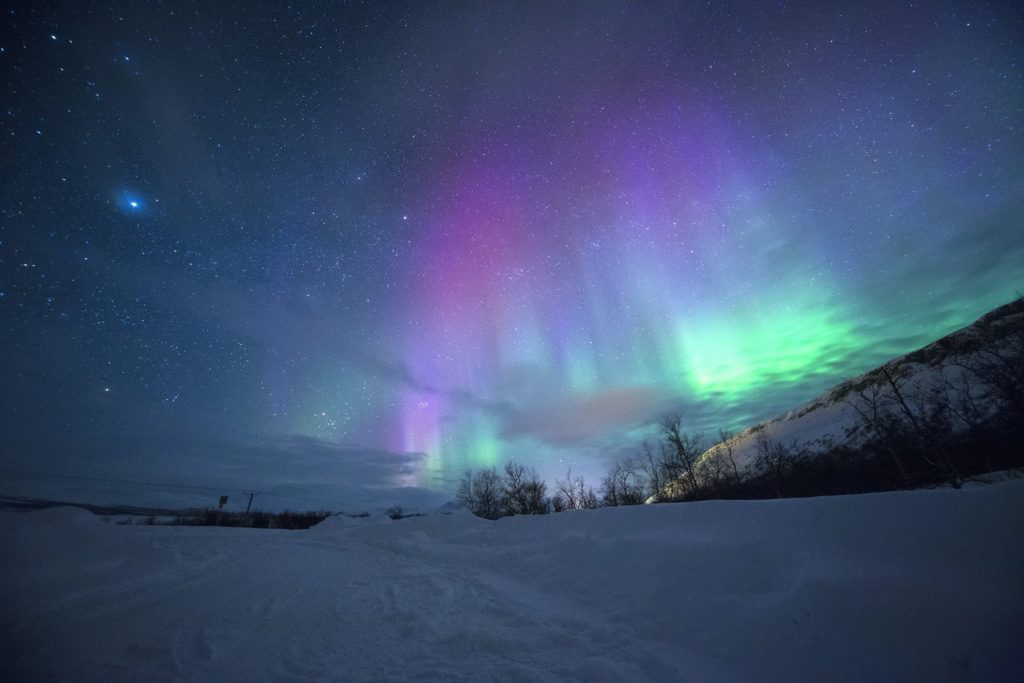
10) Fly over Reykjavík by Helicopter
Flying over Reykjavík by helicopter has got to be on your Iceland bucket list – it’s simply the bet way to see the capital. Enjoy a 30 to 45 minute long flight of Reykjavík’s best attractions, including Hallgrímskirkja and the Harpa Concert Hall, before landing on top of a mountain summit for the most spectacular views. It’s not the cheapest attraction in Reykjavík, but it’s bound to be an experience you’ll never forget.
Book your Panoramic Helicopter Flight with Summit Landing here!
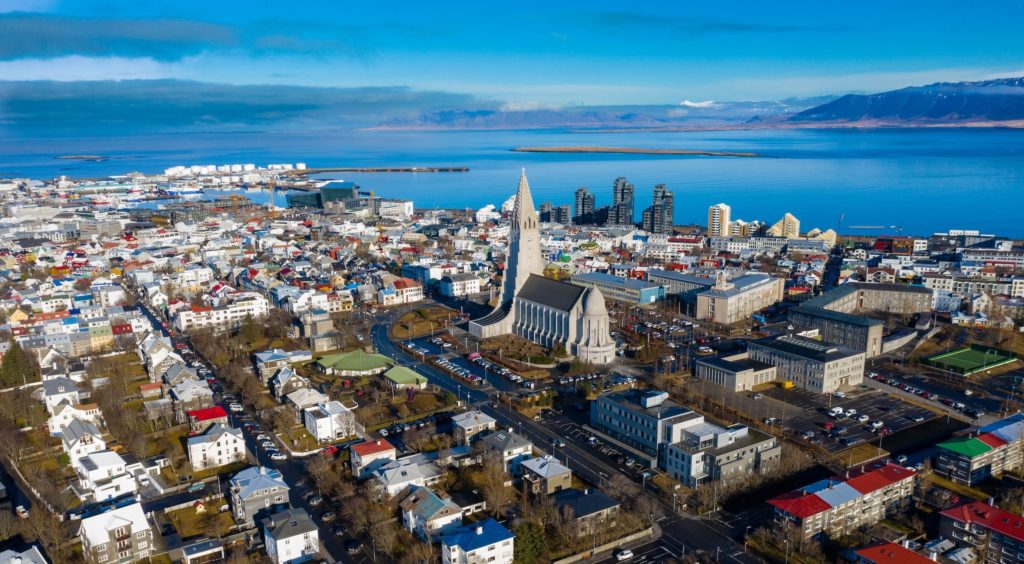
11) FlyOver Iceland
If you’re looking for a more budget-friendly aerial experience, consider FlyOver Iceland, a flight simulator offering an exhilarating journey over the world’s most spectacular scenery, from the American West to the Canadian Rockies, and Iceland’s most iconic sites. This unique attraction features motion seating and a wraparound screen, simulating a 35 minute flight over mountains and glaciers.
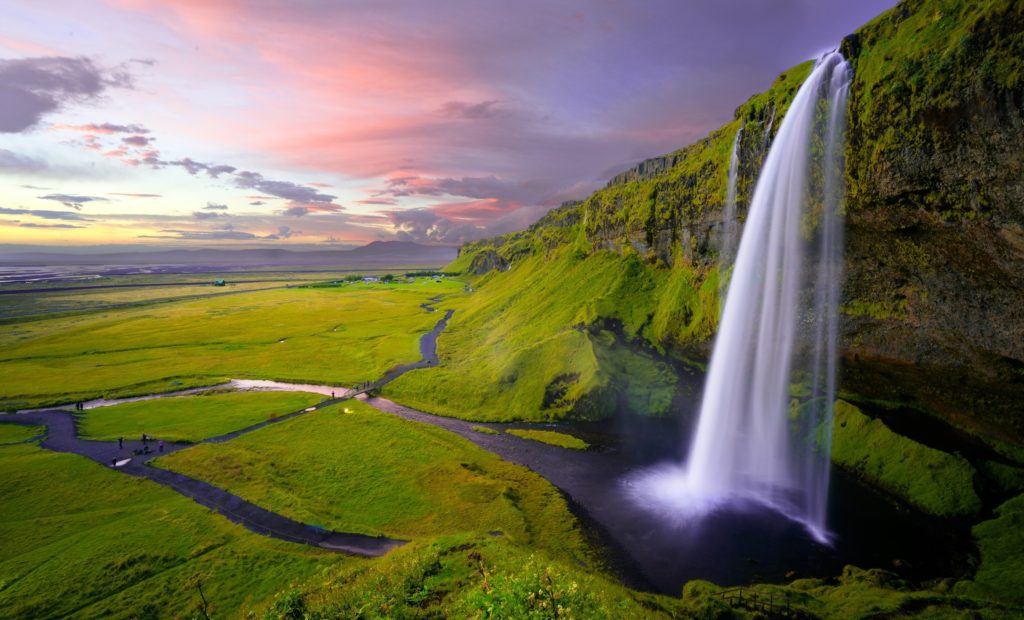
12) Reykjavík Escape Room
Escape rooms have increased in popularity in recent years and Reykjavík Escape provides the perfect excuse to get out of the cold and wet. With 7 themed rooms to choose from, there’s something for every taste, with varying degrees of difficulty:
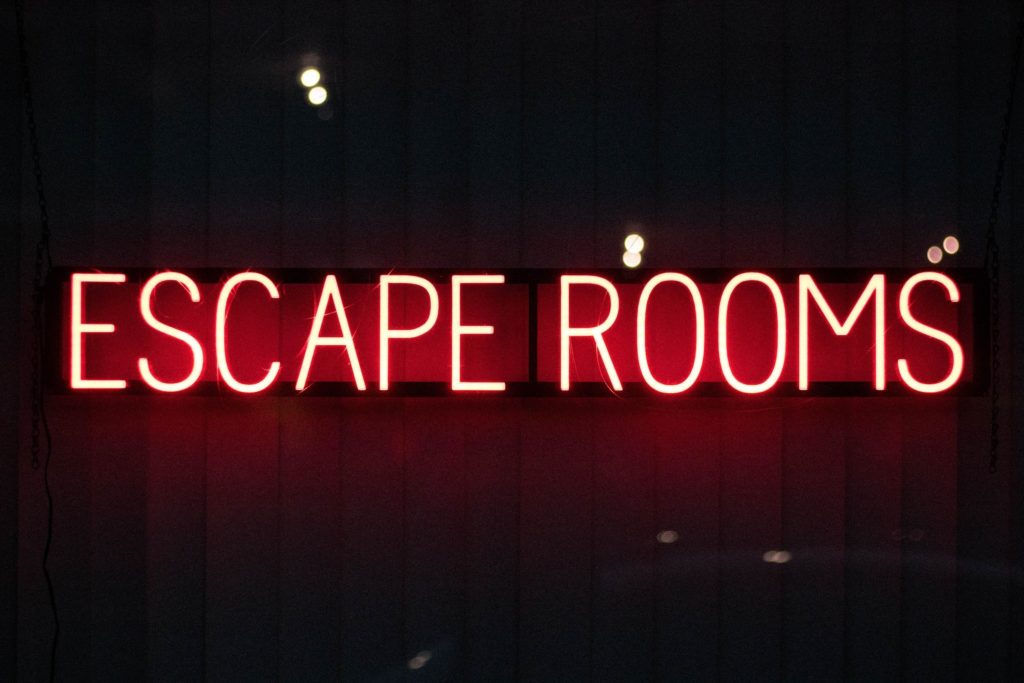
Discover more of the best things to do in Iceland in our Thorough Guide to Iceland
Museums in and around Reykjavík
Reykjavík has its fair share of museums, which is handy, as it also has its fair share of rain. There’s no better rainy day activity in Reykjavík than to museum hop. Visiting a museum can be a great way to escape the frosty air in winter too, and you’ll also learn so much about Iceland’s fascinating history, myths and legends.
If you’re thinking of visiting several museums and attractions, consider buying a Visit Reykjavík City Card. Once purchased, the card gets you free entry into numerous museums, galleries and swimming pools in Reykjavík, as well as free, unlimited travel by bus within Reykjavik city centre. There are three cards to choose from, each lasting 24 hours, 48 hours and 72 hours respectively.
Here’s a list of Reykjavík’s 17 best museums:
1) Perlan
Perlan (meaning The Pearl) is a museum set in a rotating glass dome that stands on top of Öskjuhlíð Hill in Reykjavík. It contains a viewing platform, restaurant and café, but more recently has become an educational site, boasting many exhibitions and displays. Inside you can explore a real ice cave and sit back in the Planetarium watching the northern lights dance above you.
2) The National Museum of Iceland
Featuring exhibitions and artefacts depicting Iceland’s history over the last 1200 years, the National Museum of Iceland (Thjodminjasafn Islands in Icelandic) is a great place to learn more about Icelandic cultural heritage. From the earliest evidence of a pagan burial site to Bjork’s music career, The National Museum has grown from a series of collections in 1863 to a museum at Suðurgata Street, when Iceland became a Republic in 1944.
Skip the Line: Buy your ticket for The National Museum of Iceland Ticket here!
3) Whales of Iceland
A natural history museum, Whales of Iceland is dedicated to educating visitors about the various cetacean species that have been sighted in Icelandic waters throughout recorded history. Featuring life-size models of 23 types of whales, as well as interactive displays, audio guides and informative documentaries, this is the perfect place for cetacean geeks like us.
4) Árbær Open Air Museum
A historical, Árbær Open Air Museum showcases an insight into the living conditions, work and recreational activities of the people of Reykjavík in earlier times.
5) The Iceland Phallological Museum
Boasting the world’s largest display of penises and penile parts, Iceland’s Phallus Museum is one of the weirdest and wackiest things to do in Iceland.
6) The Maritime Museum
Located in the Old Harbour of Reykjavík, Iceland’s Maritime Museum features historic ships, as well as exhibits on the local fishing industry. Set in a former fish factory, learn the importance of the fishing industry to Iceland’s identity and discover different elements around maritime life.
7) Culture House
Built between 1906-08, the Culture House (Safnahúsið) houses the National Library and National Archives of Iceland. Also called The House of Collections, there is also an exhibition space and various exhibits drawn from national museums and other cultural institutions. Don’t miss the collection of Icelandic sagas written down in ornate medieval manuscripts, the Flateyjarbok (a beautifully illustrated document written in the 14th century) and Codex Regius, the world’s oldest script of Old Norse mythology.
8) Saga Museum
The Saga Museum depicts key moments in Iceland’s history, recreated with wax figures. From the time of the earliest settlers, history is brought to life in a unique and educational way. Visitors can also seize the opportunity to don a traditional Viking costume too.
9) Reykjavik Art Museum
Boasting the largest visual art institution in Iceland, Reykjavik Art Museum (Listasafn Reykjavíkur Hafnarhús) occupies three locations in Reykjavík: Hafnarhús by the old harbour, Kjarvalsstaðir by Klambratún and Ásmundarsafn in Laugardalur. Over twenty exhibitions are run every year, ranging from the museum’s extensive collection to installations of contemporary art by international artists.
10) Reykjavík Art Museum Kjarvalsstaðir
The first building in Iceland specifically designed for hosting art exhibitions, this art museum in Reykjavík houses modern paintings and sculptures by well-known Icelandic artists, as well as a cafe and gift shop.
11) Reykjavík Art Museum Ásmundarsafn
A modern art museum and sculpture garden, Reykjavík Art Museum Ásmundarsafn can be found in the former studio of Icelandic sculptor Ásmundur Sveinsson.
12) The National Gallery of Iceland
Sticking to the art theme, The National Gallery of Iceland is a must-see for art lovers. Containing a large collection of 19th and 20th-century Icelandic art, the gallery features artwork of famous Icelandic artists and artwork that helps explain the traditional Icelandic culture.
13) The Living Art Museum
A not-for-profit, artist-run museum, and exhibition platform, The Living Art Museum is a space for innovative and experimental contemporary art in Reykjavík, with the aim of preserving and exhibiting contemporary art.
14) The Icelandic Museum of rock’n’roll
Located at the Hljómahöll concert and conference hall, this rock and roll dedicated museum portrays the history of Icelandic pop and rock music from 1830 to the present.
15) The Icelandic Punk Museum
This small novelty museum is one of the most unique spots in Reykjavík and features the history of Icelandic punk in repurposed bathroom stalls.
16) Reykjavík Museum of Photography
Reykjavík Museum of Photography features about five million photographs in collections of studio portraits, industrial, advertising, press, landscape and family photographs. The photos were taken by professional and amateur photographers from around 1870 to the present century.
17) The Settlement Exhibition
An exhibition on the settlement of Reykjavík, created by the Reykjavik City Museum, The Settlement Exhibition features remnants of 10th-century Viking settlements. The exhibition is based on the archaeological excavation of the ruin of one of the first houses in Iceland, as well as findings from other excavations in the city centre.
18) Viking World
Located near Keflavík Airport, this Viking history museum is famous for its climb-aboard replica of a 9th-century ship called The Icelander. Other exhibitions tell the story of the Viking expansion across the North Atlantic, the Settlement of Iceland and also the Norse mythology and myths. Audio guides are available in four languages: Icelandic, English, German and Danish. Buy your tickets online, in advance for a 10% discount.

The best day trips and tours from Reykjavík
1) See the Aurora Borealis
Possibly the number one reason for visiting Iceland, the Northern Lights offer a once-in-a-lifetime experience. It’s possible to self-drive to a quiet spot to try and witness this incredible phenomenon, with a little research. You’ll need to visit during Winter and start your search late at night for the best chances of seeing the Aurora Borealis. We recommend downloading an app to be up-to-date on the best weather conditions, locations and times to see the northern lights during your trip.
Alternatively, if you don’t have your own transport, you can join a Northern Lights Tour from Reykjavík. We’ve listed the best northern lights tours from Reykjavík below:
Land tours:
Budget: Northern Lights Bus Tour
Small group: Minibus Northern Lights Tour
Memorable: Northern Lights Photo Tour
Boat tours:
Affordable: Northern Lights Sightseeing Cruise
Luxury: Northern Lights Yacht Tour
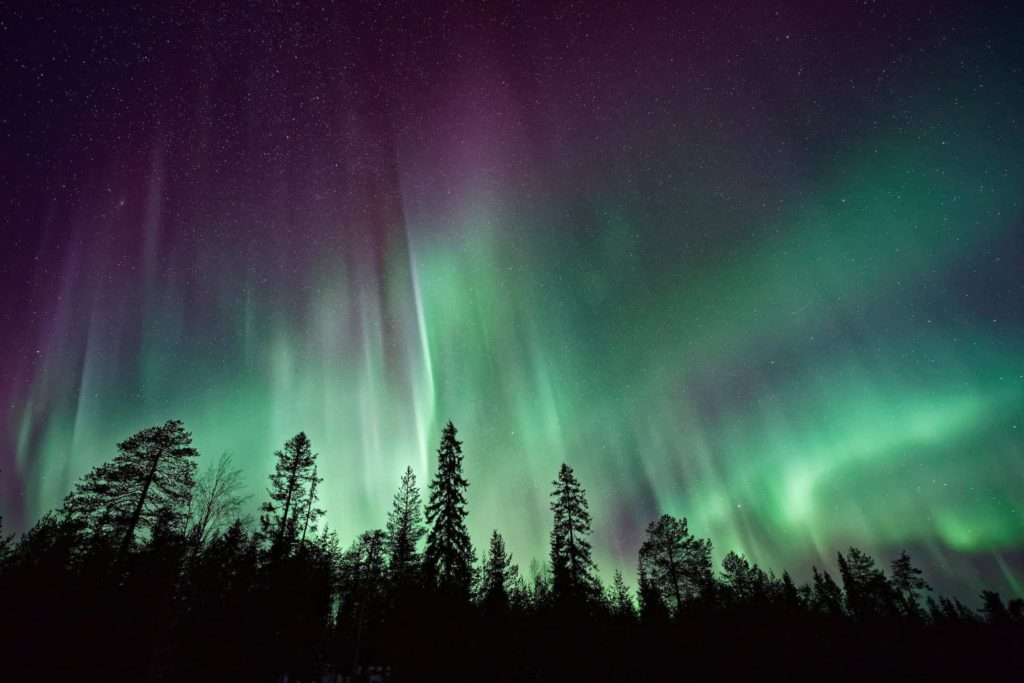
2) Tour the Golden Circle
You cannot visit Iceland without getting out into the countryside and experiencing Iceland’s truly rugged landscape. Witness lava spill from a volcano, boiling water blast into the air from a geyser and waterfalls gush over frozen cascades. There are three main natural attractions on the 190-mile (300km) circular Golden Circle route, but more stops can be added depending on how much time you have.
If you hire a car, it’s easy to self-drive Iceland’s Golden Circle and it can easily be completed in one day. Alternatively, you can book a Full Day Golden Circle Tour. The basic tours take in the three main stops but there are numerous options which include some of Iceland’s best attractions. We’ve rounded up the best Iceland Golden Circle Tours below:
Basic: Golden Circle Day Tour
Classic: Golden Circle with Kerid Crater Tour
Memorable: Golden Circle and Northern Lights Tour
Popular: Golden Circle with Iceland’s Blue Lagoon Tour
Adrenaline: Golden Circle with Snowmobiling on a Glacier
Adventurous: Golden Circle and Glacier Ice Cave Tour
Bucket list: Golden Circle and Silfra Fissure snorkelling
Small-group: Golden Circle Geological Jeep Day Tour
Private: Private Golden Circle Day Tour
Read next: Thorough Guide to The Golden Circle


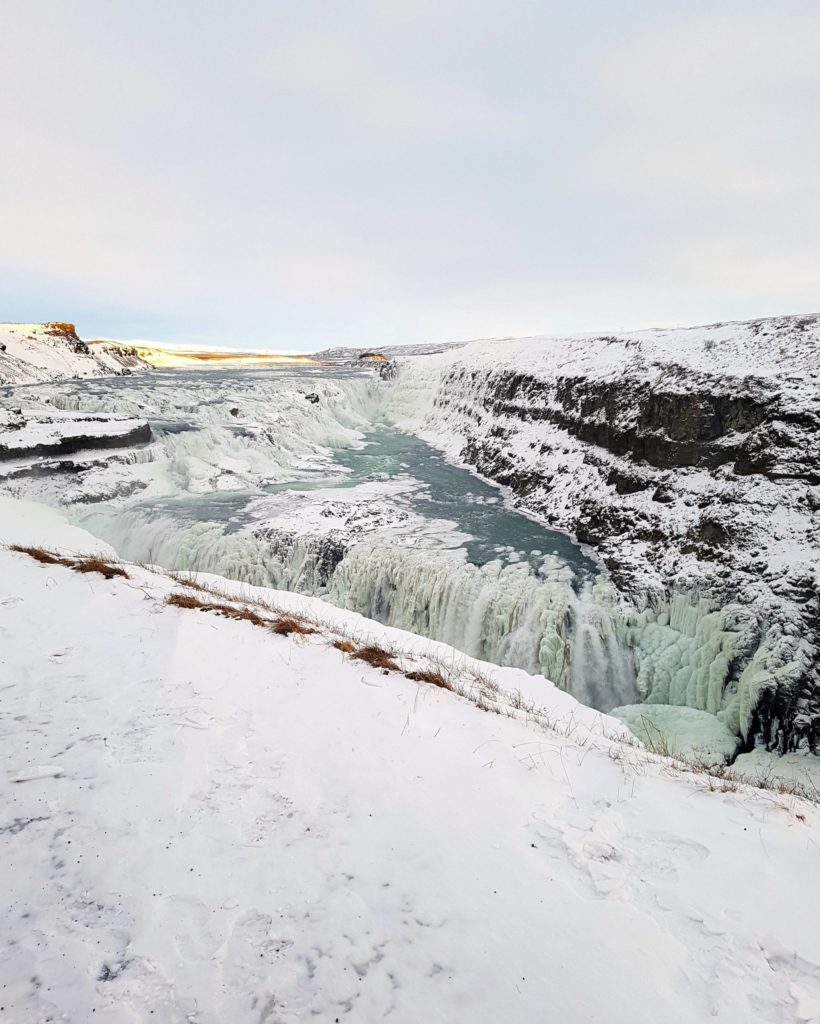
3) Snorkel or SCUBA dive between two tectonic plates
Iceland is the only place in the world where you can SCUBA dive between the European and North American tectonic plates. Located within Þingvellir (Thingvellir) National Park on the Golden Circle route, Silfra Fissure has the best underwater visibility in the world, with clear waters giving you 100 metre (328 ft) visibility. The water temperature may be a chilly 2°C (35°F), but this is an activity not to miss off your Iceland bucket list.
Don’t worry if you’re not PADI certified. You can also join a Snorkel Tour of Silfra Fissure with free underwater photos! And if you’re coming from Reykjavík, consider combining snorkelling Silfra Fissure with a Golden Circle tour.

4) Relax in the Blue Lagoon
Conveniently situated 40 minutes from Reykjavík and containing 9 million litres of seawater, Iceland’s Blue Lagoon is a man-made geothermal spa. The water is supplied by the nearby Svartsengi geothermal power station and is a milky blue shade as a result of the way the silica reflects sunlight. The water’s temperature is a glorious 38°C (100°F) and is also rich in salts and algae, which are good for the skin. There are a variety of packages available so there’s something for every budget!
It’s possible to park at the Blue Lagoon if you hire a car, you’ll simply need to pre-book your entry ticket. Alternatively, you can book transfers to and from Reykjavík when you buy your Blue Lagoon ticket. Or combine your Blue Lagoon experience with the Golden Circle on a small-group tour.
Book your Blue Lagoon Entry Ticket with Drink, Towel, and Mud Mask here!
Pro-tip: Book the first or last time slot of the day for the quietest time with the least people. It’s also worth noting that the Blue Lagoon is only 20 minutes from Keflavík International Airport. Tie in a visit with your trip to/from the airport to make the most of your time in Reykjavík!
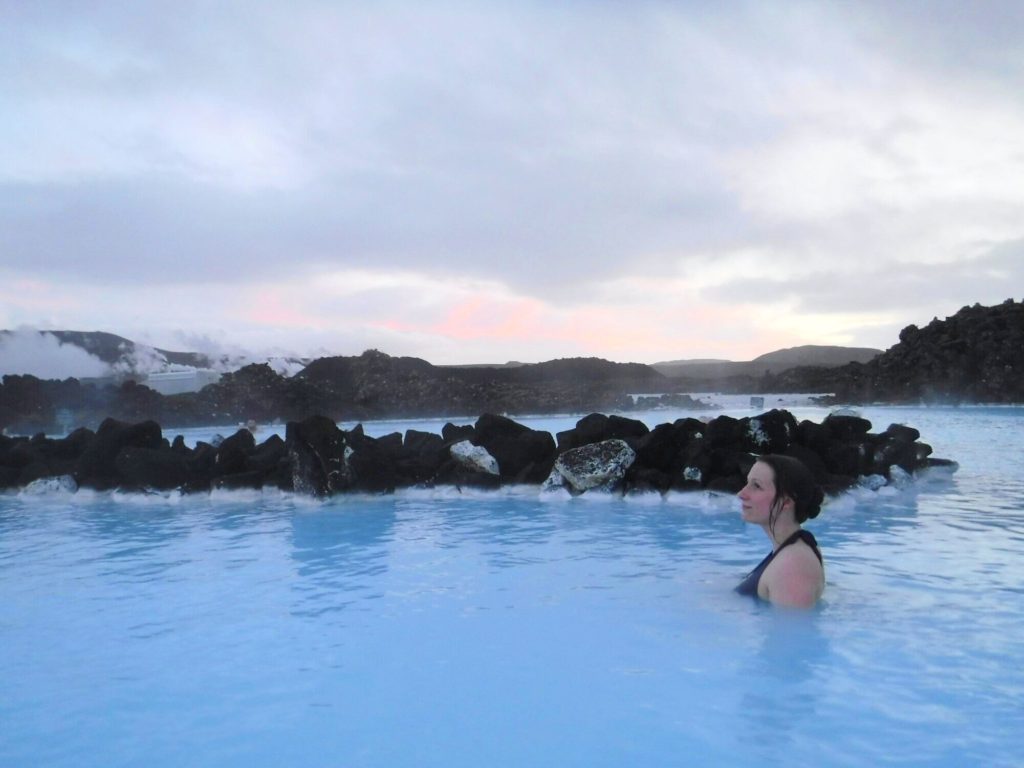
5) Bathe in Sky Lagoon
The Blue Lagoon is one of the best things to do in Iceland, so it does come with a reputation for being incredibly busy. If you like to escape the crowds, consider a lesser well-known geothermal spa: Sky Lagoon. A newcomer to Iceland’s Geothermal Pool competition, Sky Lagoon is a strong contender. Offering views of Snæfellsjökull (a glacier-capped volcano) and Keilir mountain, Sky Lagoon is the perfect place to relax and experience the traditional healing powers of warm water, cold water, warm steam, dry heat and fresh air in the 7-step healing ritual. Sky Lagoon is only a short drive from downtown Reykjavík and you can buy your Sky Lagoon Entrance Pass With 7-Step Spa Ritual here. Alternatively, Round-trip Transfers can be included in your ticket for those without a car.
Discover 5 more undiscovered Geothermal Spas in The Thorough Guide to Iceland
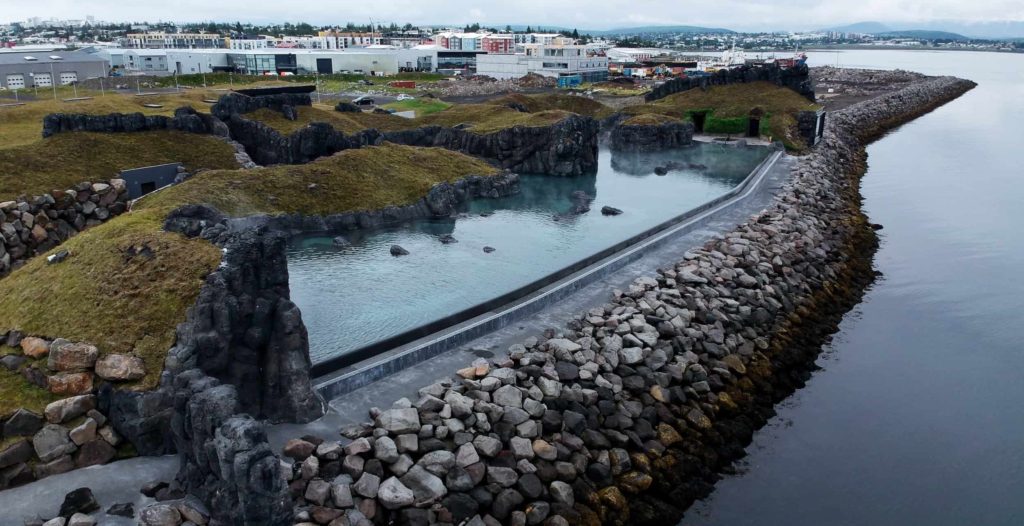
6) Discover Southern Iceland
When you see photos of Iceland, they’re almost always taken in the south. Boasting towering volcanoes, long black sand beaches, iconic waterfalls and expansive glaciers, the south of Iceland is one of the best day trips from Reykjavík. On a day trip to the south, you can walk behind the cascades of Seljalandsfoss, feel the power of Skógafoss (one of the biggest waterfalls in Iceland) and go to the glacier snout at Sólheimajökull.
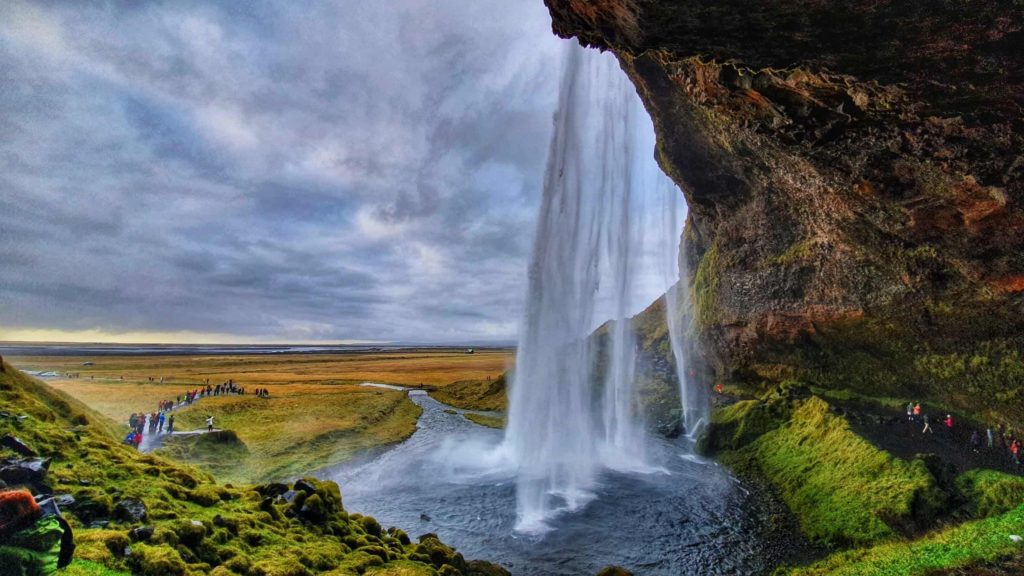
7) Boat on Jökulsárlón Glacier
Located in the expansive Vatnajökull National Park, Jökulsárlón is a large glacial lake in southern Iceland. Famous for its huge floating icebergs, this Glacier Lagoon is one of the best trips from Reykjavík and really puts the ice in your trip to Iceland. Between April to October you can take a boat cruise on the Jökulsárlón glacial lake and many tours also include stops at Iceland’s southernmost village, Vik, the volcanic Diamond Beach and the famous Seljalandsfoss Waterfall too.
Book your Jökulsárlón Glacier Lagoon Full-Day Trip from Reykjavik here!
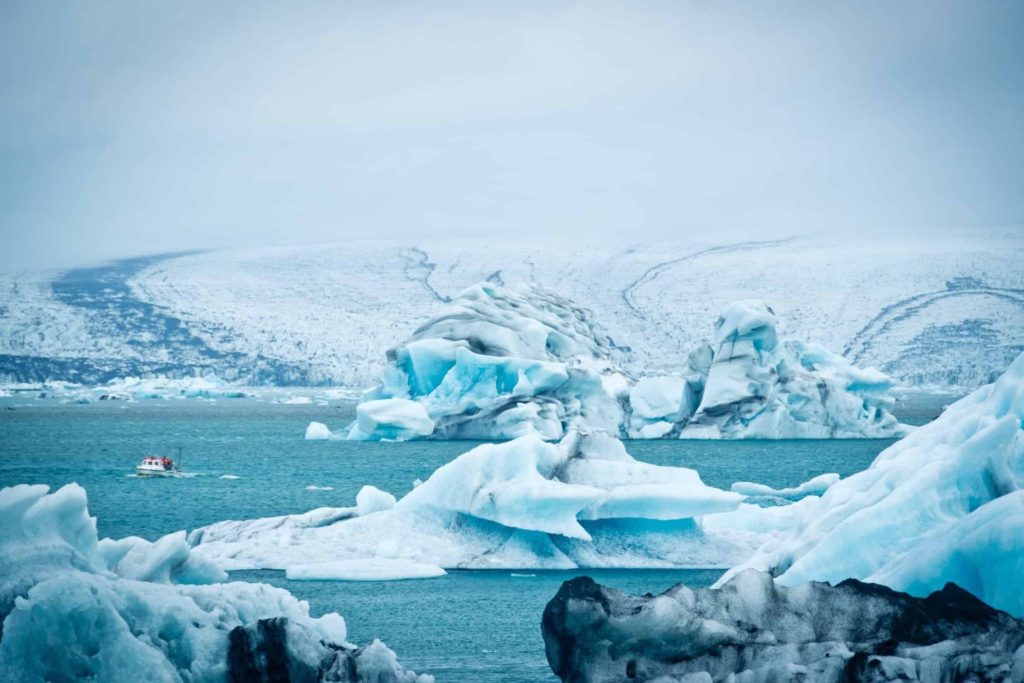
8) See lava erupt from a volcano
Hiking through lava fields and witnessing lava spill from an active volcano is a once-in-a-lifetime adventure. Iceland is one of the best places in the world to see lava flow from a volcanic eruption, but it can never be guaranteed. Iceland is home to over 200 active volcanoes, but you’ll need to time your trip with an eruption to see lava. There are a few volcanoes known for frequent activity, including Grímsvötn, Hekla and Katla.
You should check Iceland’s Safe Travel website for all the latest eruption information during your visit. Eruptions can have devastating effects and be incredibly dangerous, so do your research and stay safe. Guided tours are a great way to witness volcanic activity safely. You can hike past landscapes of flaming craters and fissures on this Meradalur Volcano Tour. If there’s no flowing lava during your trip, you can still delve into subterranean lava caves, hike over lava fields or discover the inner workings of a volcano inside lava tubes.
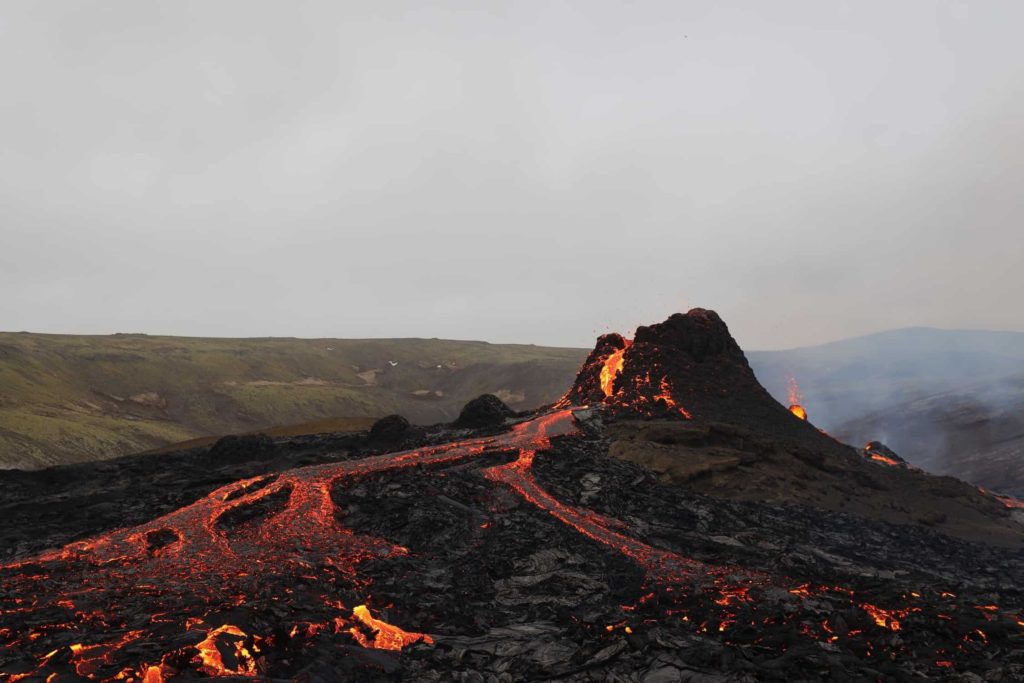
9) Visit Snæfellsjökull National Park
Iceland’s western peninsula, Snæfellsnes, is home to the famous 700,000-year-old, sub-glacial stratovolcano Snæfellsjökull, which was actually the influence for Jules Verne’s Journey to the Centre of the Earth. This large national park boasts diverse landscapes and numerous natural attractions, including expansive lava tubes, lava fields and Kirkjufell, the distinctly shaped Church Mountain. The park is also home to Djúpalón Black Sand Beach, where the remains of Edning, an Epine Fishing Trawler that was wrecked off the beach in 1948, can be found. The park is only a couple of hours’ drive from Reykjavík, making it an easy day trip from Iceland’s capital.
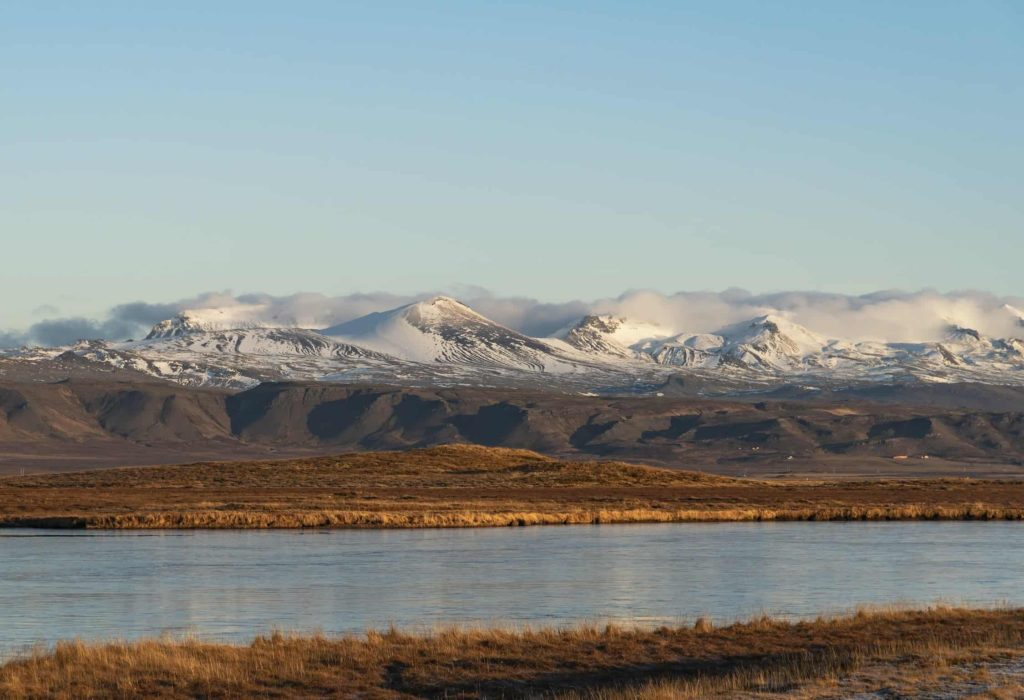
10) See the Game of Thrones Filming Locations
Calling all Game of Thrones fans, did you know a lot of the hit TV series was actually filmed in Iceland? Leaving from Reykjavík, this fun, guided day tour will take you to all the most famous sites in Iceland where some of the most iconic scenes of the franchise were filmed. Hear stories from behind the scenes and discover the mythical land of Westeros as it was envisioned in George R.R. Martin’s A Song of Ice and Fire novels.
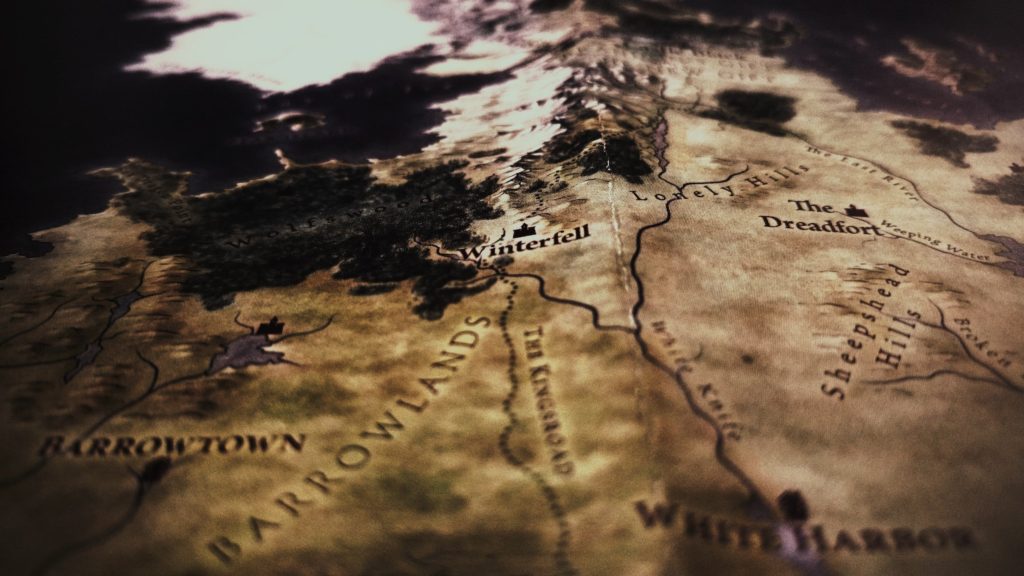
Discover more of the best things to do in Iceland in our Thorough Guide to Iceland
Interactive Reykjavík Map
Use the filters on the tab on the left-hand side of the map to see attractions, accommodations, restaurants and more.
What to eat in Iceland
Iceland’s cuisine reflects its rugged landscape and a lot of local dishes are very simple. Lamb, fish and dairy are popular ingredients in Icelandic cuisine, while more controversial meats are available in certain restaurants, including puffin, shark, whale, horse and reindeer. Here are a few traditional Icelandic foods we’d recommend you try during your visit:
- Skyr, thick and creamy Icelandic yoghurt.
- Hot chocolate
- Seafood – Plokkfiskur (mashed fish stew), Harðfiskur (dried fish), Humar (Icelandic lobster/langoustine).
- Pylsur – A hot dog, mostly made from Icelandic lamb, with a bit of pork and beef.
- Snúður – A cinnamon-filled bread roll covered in chocolate, caramel, or sugar glaze.
- Pönnukökur – Thin crépe-like pancakes, usually served rolled up with a good amount of sugar or carefully folded with jam and whipped cream.
- Lakkrís – Icelandic liquorice.
- Brennivín – A distilled liquor, it is sometimes called Svarti dauði, meaning Black Death.
Find out more about the best places to eat in Iceland here.

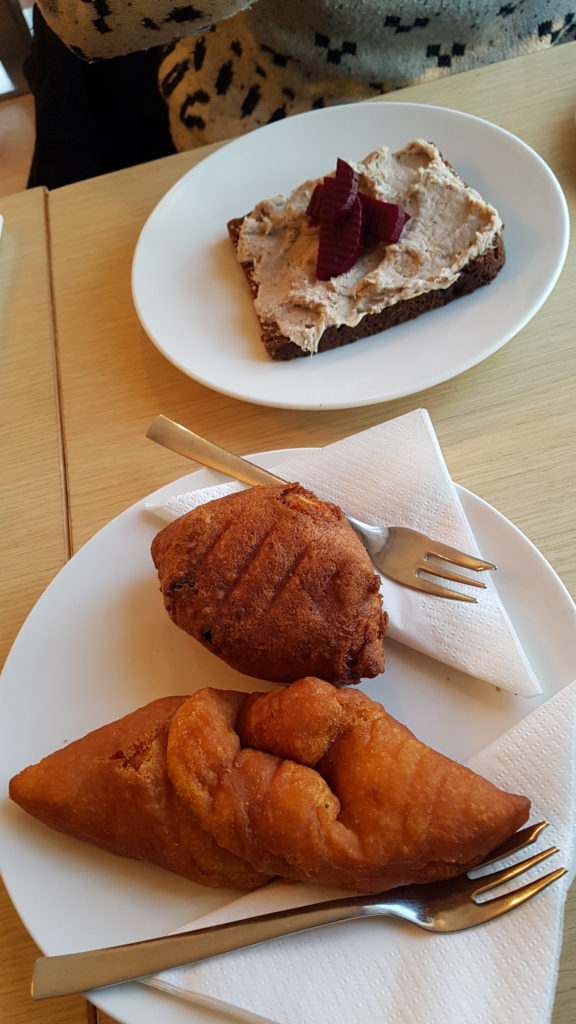
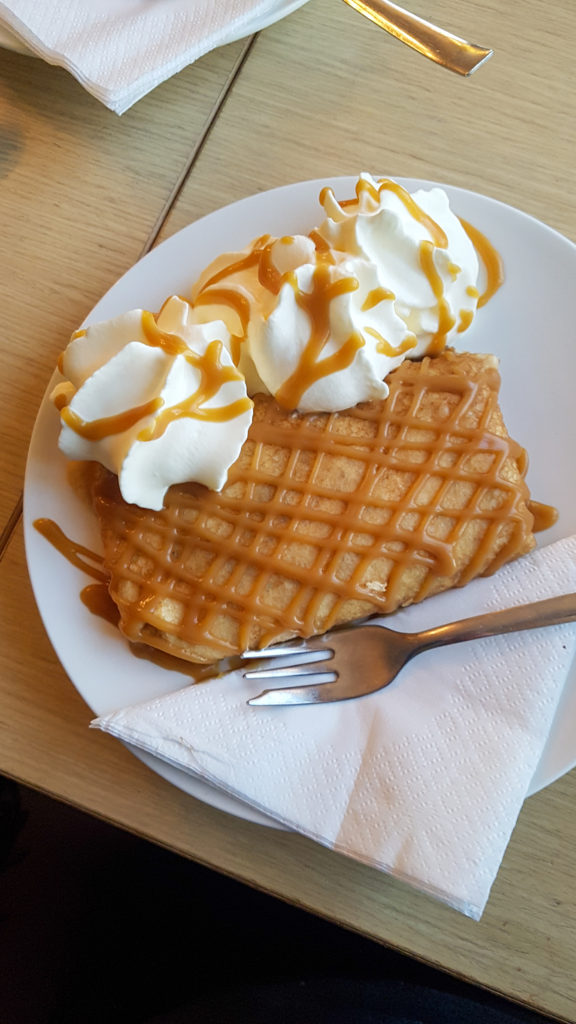
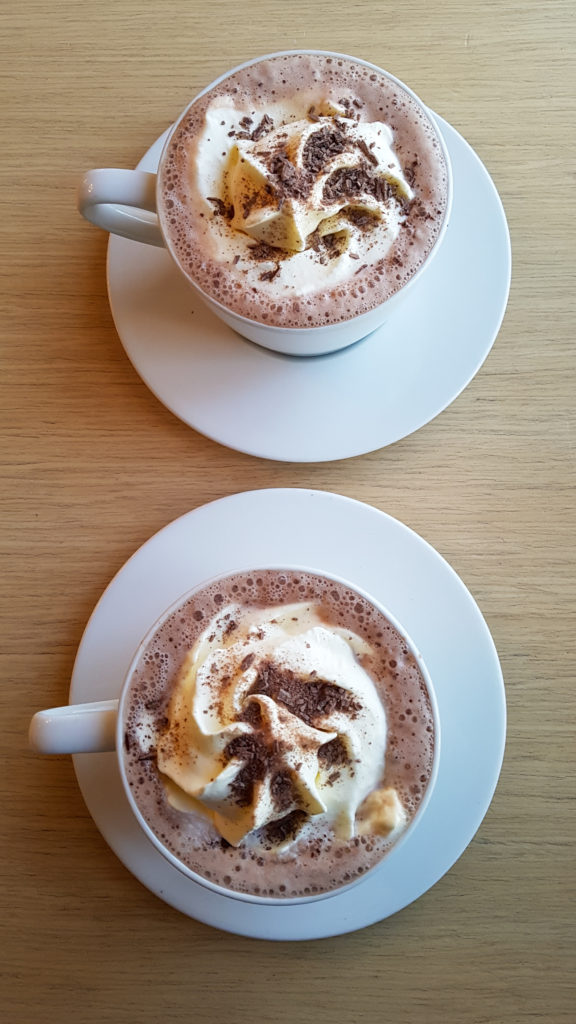
The best bars and restaurants in Reykjavík
From independent cafés to 7-course tasting menus in Michelin-star restaurants, Reykjavík has it all. Foodies should consider joining a Walking Food Tour of Reykjavík, which includes sampling lots of Icelandic classics, including Icelandic cheeses, lamb, homemade ice cream, and the famous Icelandic hot dogs.
Here are a few of our favourite bars and restaurants in Reykjavík:
- Kaffi Loki – Located opposite the Hallgrímskirkja, Kaffi Loki has some of the best food in Reykjavík, with a view.
- Svarta Kaffið – Simple but so delicious we went twice, Svarta Kaffið specialises in soup in a bread bowl. They serve different flavours each day and include veggie options.
- Brauð & Co – Also known as The Cinnamon Bun Bakery, Braud & Co sells freshly made bread and baked goods.
- Omnom Chocolate and Ice Cream – Bean-to-bar chocolate made in the port-side factory and creative ice creams made using high quality ingredients.
- Vagninn – A food truck by the sea, specialising in fresh seafood and chips, as well as fish soup.
- Sægreifinn – Also known as the Sea Baron, try the lobster soup or haddock kebab.
- Apotek – Offers delicious and reasonably-priced cocktails!
- Magic Ice Bar – A room full of ice sculptures and art connected to Icelandic Viking history and myths, serving delicious drinks in a bar made completely of ice. Book your Ice Bar Experience here!
- Bonus – Don’t worry if you’re on a budget and won’t be eating out all the time. Bonus is Iceland’s most affordable supermarket and there are a fair few dotted around Reykjavík.
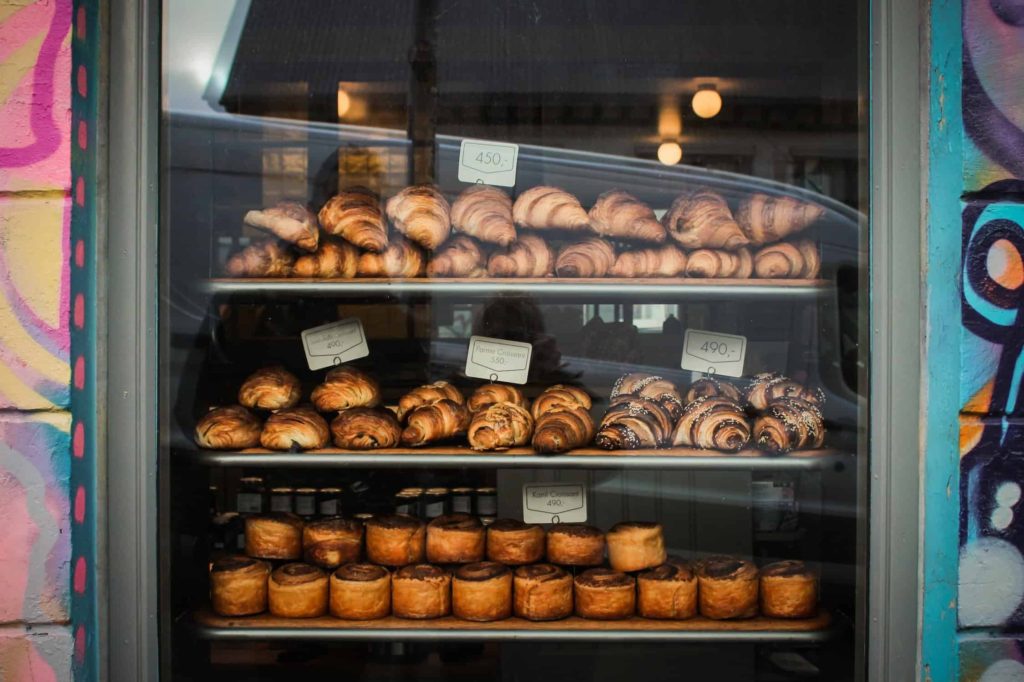
Where to stay in Reykjavík: hotels, hostels and self-catering accommodation
While there is a wide range of Reykjavík accommodation, most people opt to stay in a hotel within walking distance of the city centre. Hotels can range in price, from basic to luxury, with the cheaper hotels tending to be on the outskirts of town. Here’s a rundown of the most popular Reykjavík districts to stay in:
- Miðborg (the city centre)
Reykjavik’s downtown area is a stone’s throw from the main attractions, as well as the majority of the city’s bars, restaurants, cafés, museums and galleries. Here you’ll find the main streets Bankastræti, Austurstræti, and Laugavegur, the latter of which is one of the oldest streets in the capital and is the main shopping street.
- Vesturbær
Situated west of downtown, Vesturbær is slightly quieter than the main centre and is surrounded by sea on both sides. Most hotels are a 20-30 minute stroll to the city centre along the seafront.
- Tún
Moving east you’ll find Tún, a quiet neighbourhood where you’ll find cheaper hotels than in the city centre. A 15-20 minute stroll from the main attractions, these hotels often offer impressive sea views too.
- Hlíðar
Hlíðar is a lively and culturally diverse district and home to the Reykjavík Art Museum, which features modern Icelandic paintings and sculptures. The cheaper options, such as guesthouses and hostels, are located in this area.
And here are a few of our favourite Reykjavík hotels:
Budget: Student Hostel
Quirky: Galaxy Pod Hostel
Mid-range: The Foss Hotel
Unique: Reykjavík Domes
Luxury: The Reykjavík EDITION

How to get around Reykjavík
Reykjavík is extremely walkable and wandering the charming streets is the best way to get from A to B. You can follow your own walking tour route, or join a walking tour of Reykjavík with a Viking for a more unique experience.
Reykjavík has a good public transport system and you can use Stræto, a public transport app for planning journeys around both the capital area and the island. Alternatively, you can join a Hop-On Hop-Off Bus Tour, which takes you around all the main sights. This is a good option for adventurers who are less mobile, or anyone wanting to escape walking around in the chilly winter air.
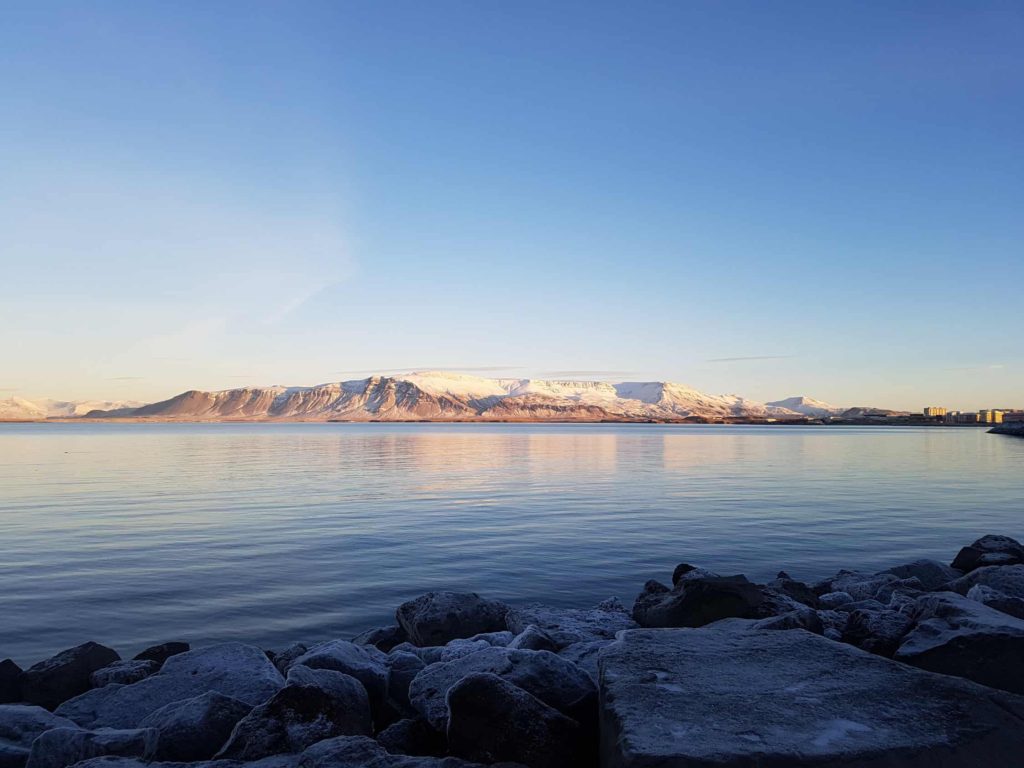
How to get to Reykjavík
Cheap flights to Reykjavík
Many international airlines fly directly to Iceland, including Icelandair, EasyJet, Jet2, British Airways, American Airlines and TUI. You’ll find the cheapest flights to Iceland fly into Keflavík International Airport. You can find cheap flights to Iceland on Skyscanner.
Reykjavík airport transfers
Keflavík International Airport is then a 45-minute drive from Reykjavík. You can take a taxi from the airport but it’s going to set you back over $100. Or you can pre-book a shared shuttle, which is a cheaper option. Another budget-friendly option includes taking the Flybus, which offers a comfortable bus transfer with Wi-Fi and bag storage.
Reykjavík Package Holiday
We’d encourage you to consider booking a holiday to Iceland. We spent 5 nights in Reykjavík with TUI in 2017. After pricing up all the flights, accommodation and transfers, we found their package to be cheaper than doing it all ourselves. All TUI’s packages are ATOL-insurance protected too so, not only do you not have to organise everything, but you have an extra layer of protection too. TUI also have a wide range of excursions you can book, from snowmobiling on a glacier to bathing in geothermal pools. By booking with TUI, we saved money and ended up with a Northern Lights Tour for free!
Taking a boat to Reykjavík
Many cruises also stop at Iceland while the M/S Norröna Ferry sails weekly from Denmark to Iceland via the Faroe Islands.
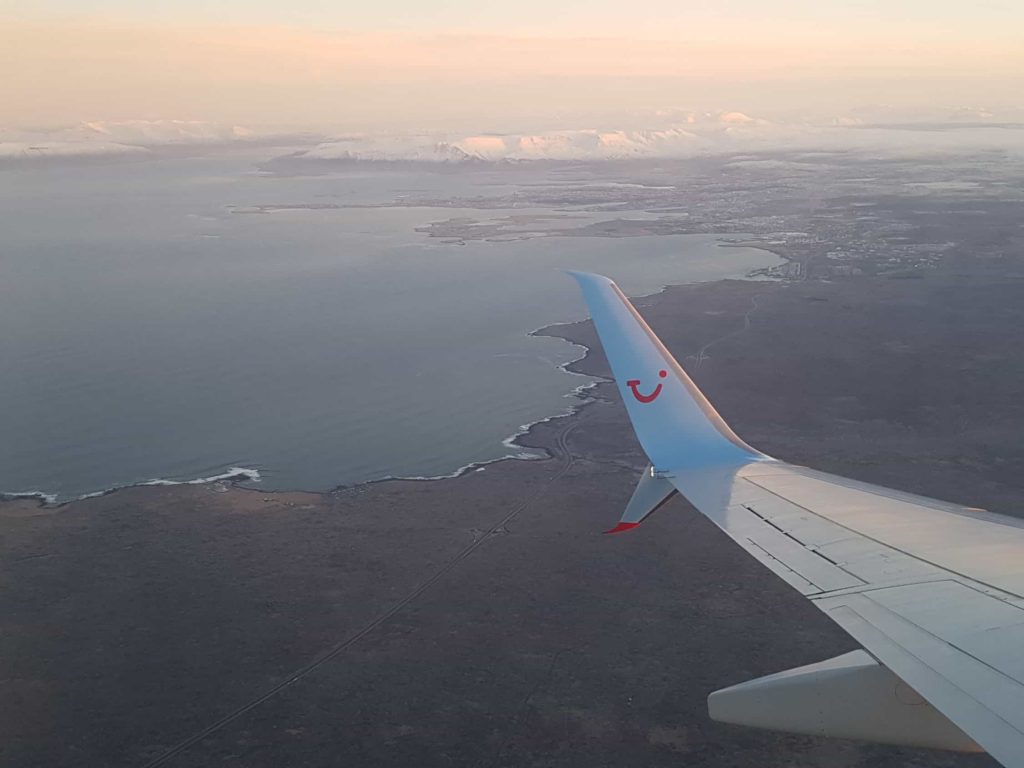
Is Reykjavík expensive?
Yes, Reykjavík is expensive. But that doesn’t mean you can’t visit Iceland on a budget. Iceland may be one of the most expensive countries in the world but if you’ve done your research, travelling on the cheap is easy. Here are a few tips for saving money in Reykjavík:
- Don’t eat out every night. Restaurants in Reykjavík can be pricey so self-catering can save you money.
- Cut back on alcohol. Alcoholic drinks are incredibly expensive in Iceland as most have to be imported.
- Visit Reykjavík during off-season when prices are lower. September-April is the best time to visit Reykjavík, avoiding holidays like Christmas and New Year.
- Hiring a car can be cheaper than taking a lot of day tours.
- Choose hostels over hotels – you’ll likely spend the majority of your time outside exploring anyway, so saving money on accommodation can stretch your budget further. Camping in Iceland is the cheapest way to visit.
Read next: How to Travel on a Budget + Top Tips for Making Your Money Last Longer
Read next:
Reykjavík: A One Day Itinerary
The Thorough Guide to Iceland’s Golden Circle
Check us out on social media!
